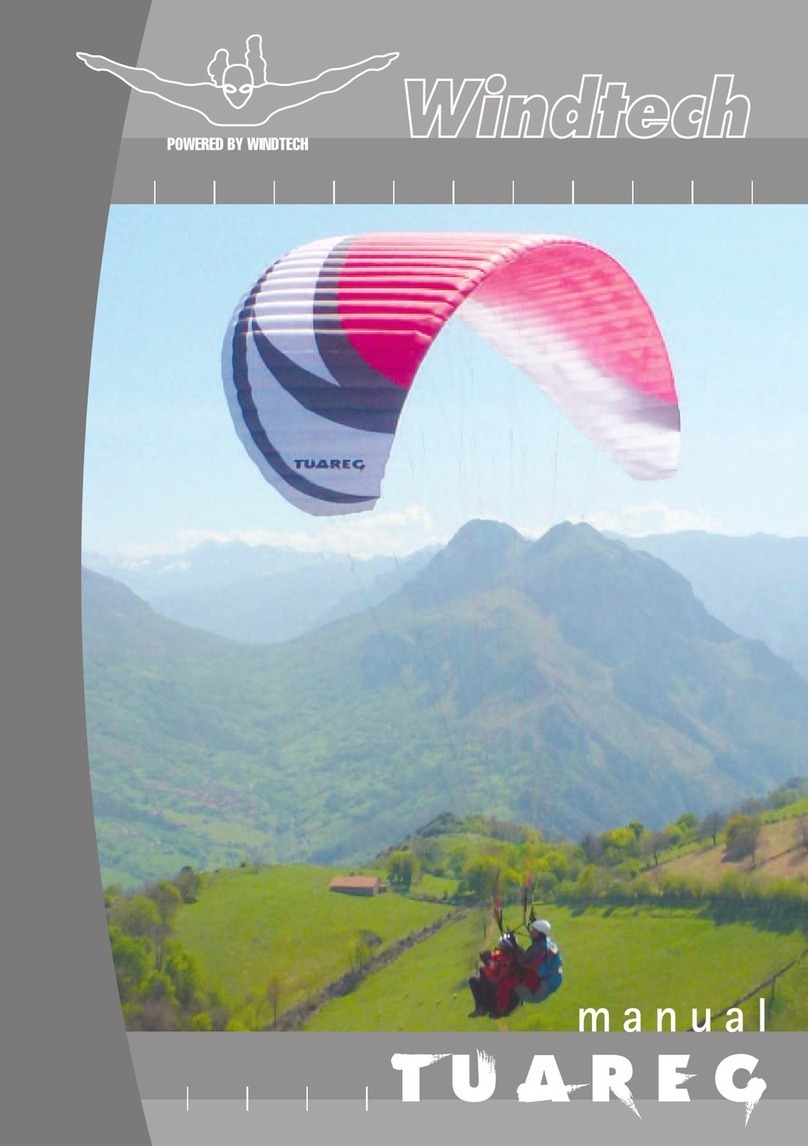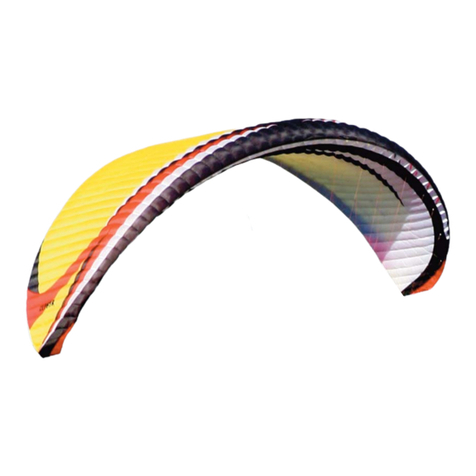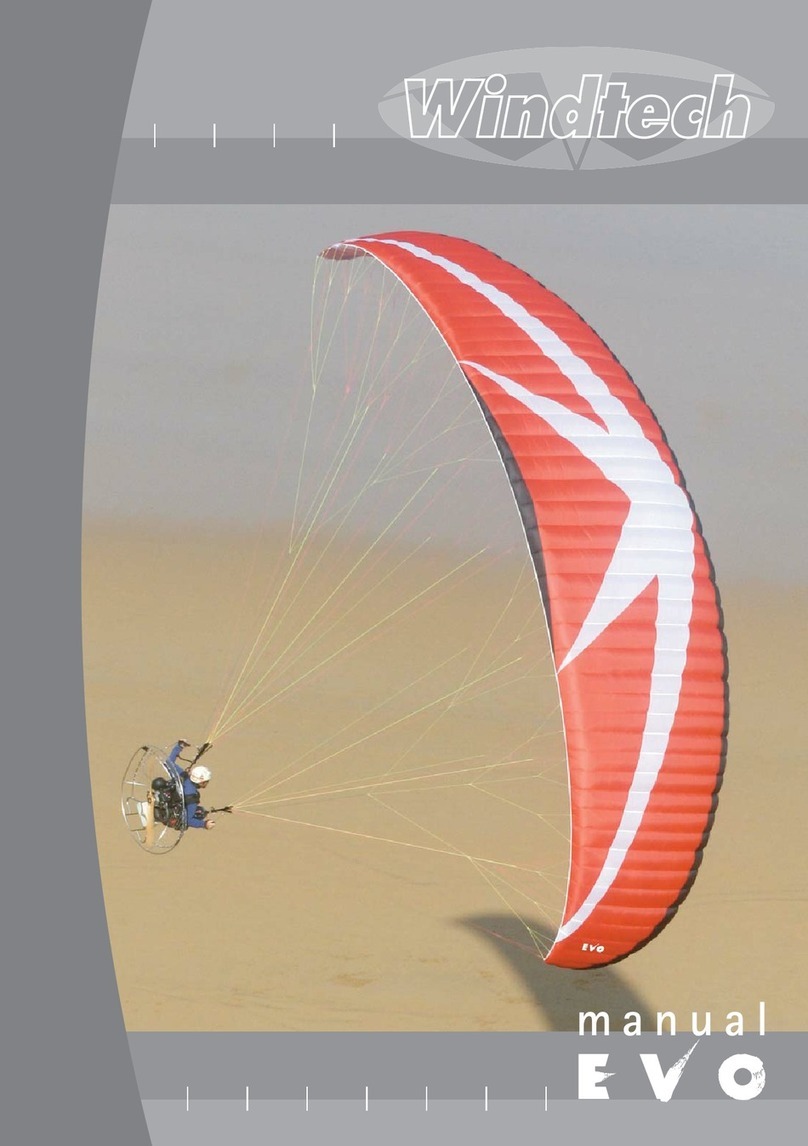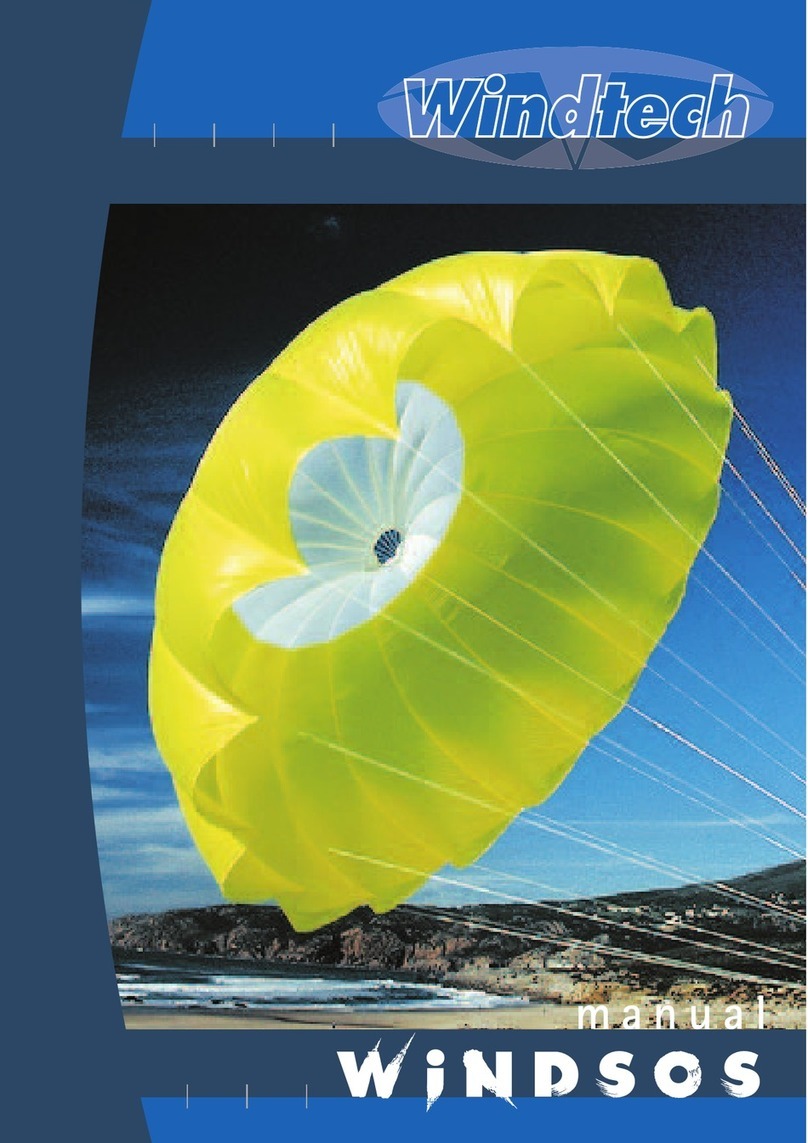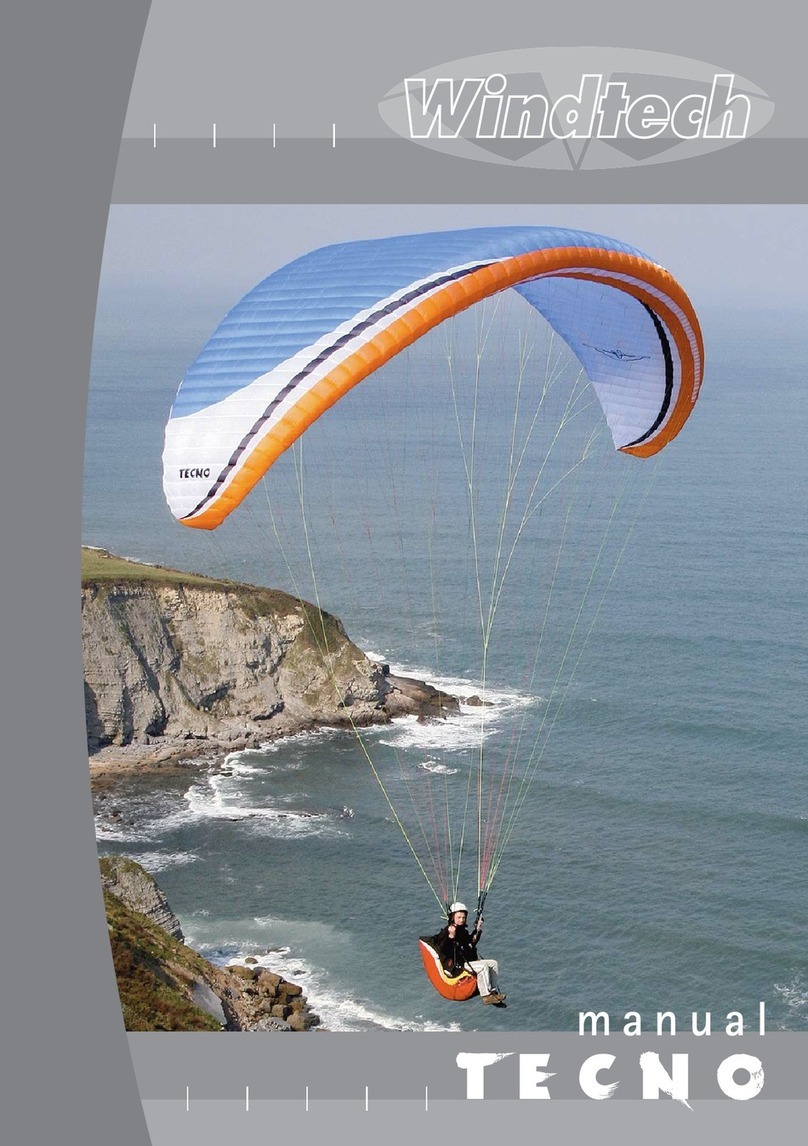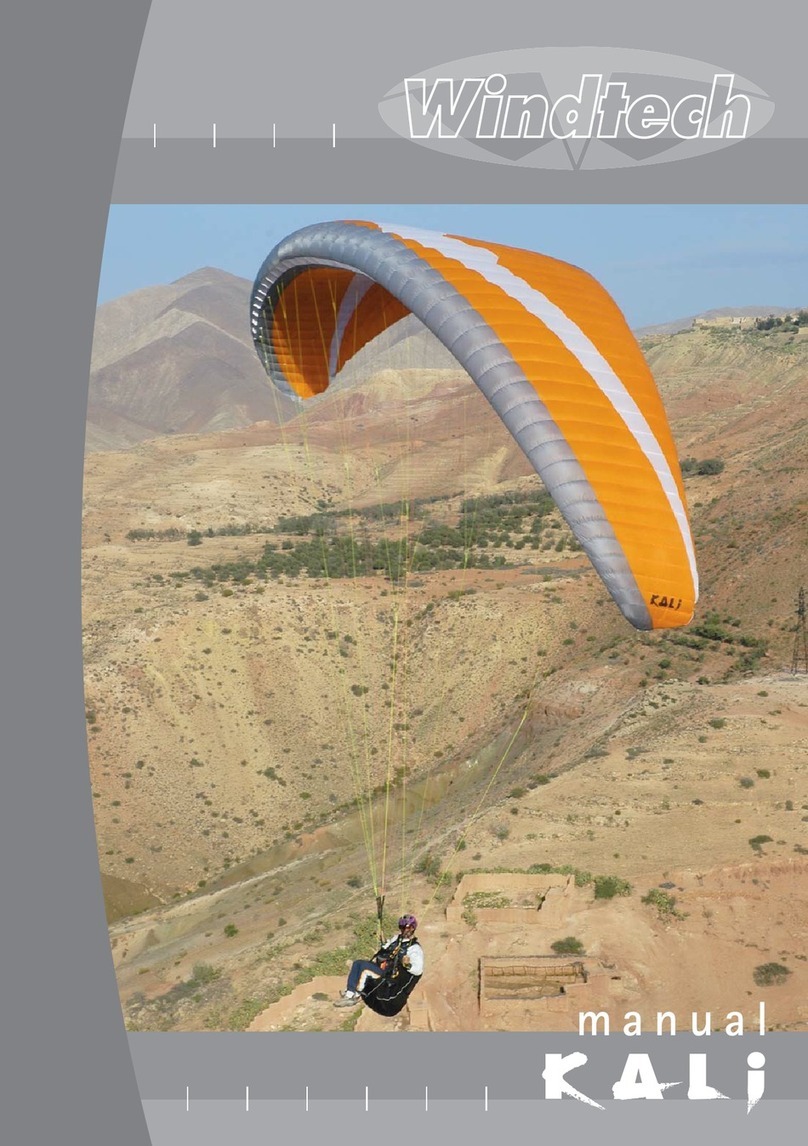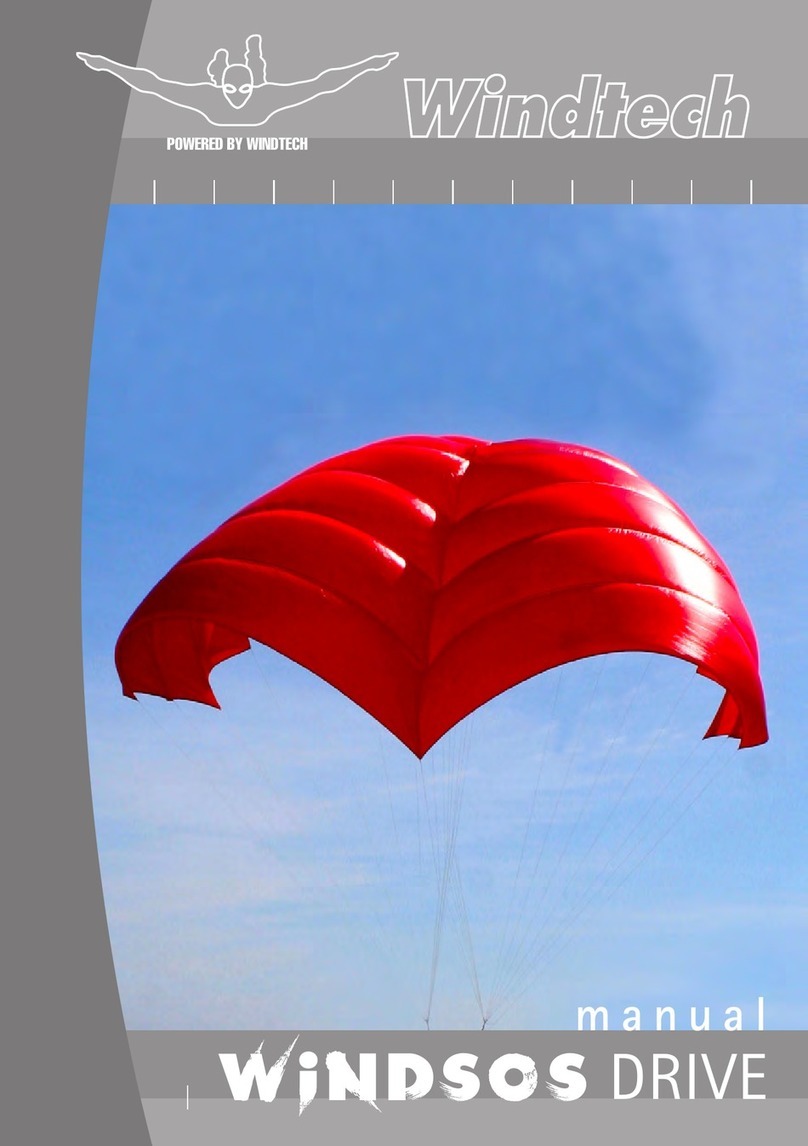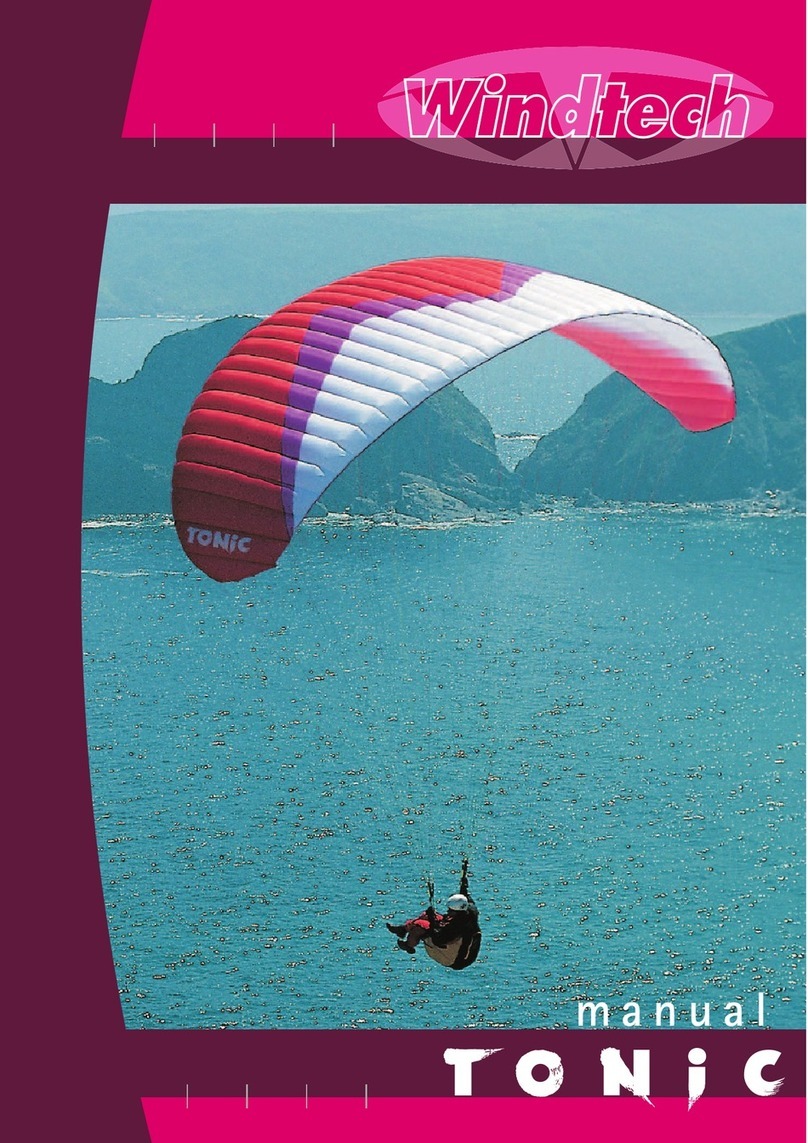8
With a tailwind the best performance is obtained with 0% trim and 10% brake.
The trim of this paraglider has been limited in its travel to a point where the stability
of the paraglider is still high and allows gaining 12 km/h. In any case, it is advisable
not to use it close to the ground and when we notice turbulence, close it down quickly,
up to the takeoff and turbulence position.
Note that glide angle is not affected by load, but safety is.
Always fly a paraglider of your size and remember that if your takeoff weight is below
the stipulated minimum, the speed range decreases and takeoff problems appear. In
addition, the handling worsens in turbulent conditions, being able to collapse the sail
more easily. If your takeoff weight is above the stipulated weight, you will have a high-
er minimum and landing speed and the stall speed on your glider will be higher.
The RALLY has a brake of medium
hardness (from 1.5 to 3 kg of
effort, for most of the manoeu-
vres) the stall is outside the brake
travel, and to access this configu-
ration (not recommended in any
type of paraglider) It takes more
than 9 kg of effort and take it a
couple wraps in the brake line.
-- with motor
The concept of performance with
the engine varies enormously in
consideration with free flight. This
depends on the thrust and dimen-
sions of the engine, its power, pro-
peller diameter, flight altitude, air
density, wing loading, etc.
What is true is that due to the
increase in wing loading and the
extra resistance of the chassis and
engine propeller, both the sink rate
and glide are affected, so we con-
sider it very important to choose
the engine that best suits suit our
weight and flight intentions, usual
flight altitude, etc. Combining all
this series of variants, we will
achieve some yields or others.

